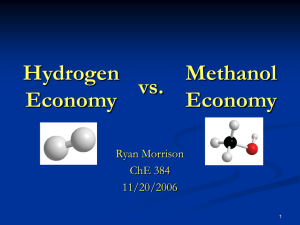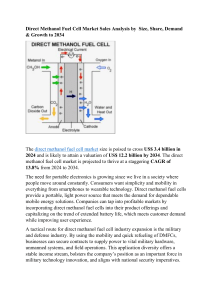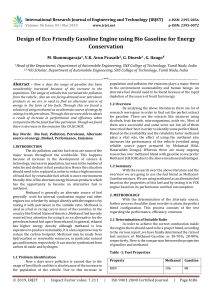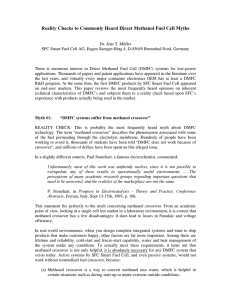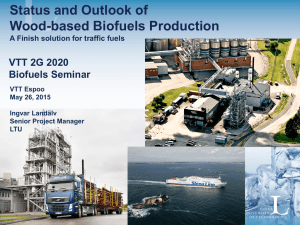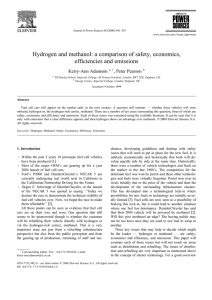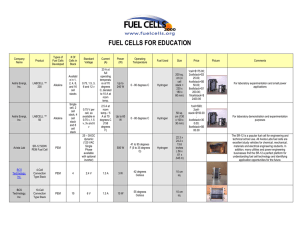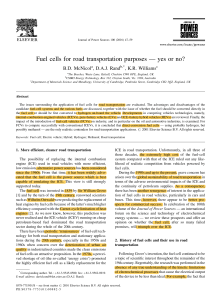Design and Control of High Temperature PEM Fuel Cell System
advertisement
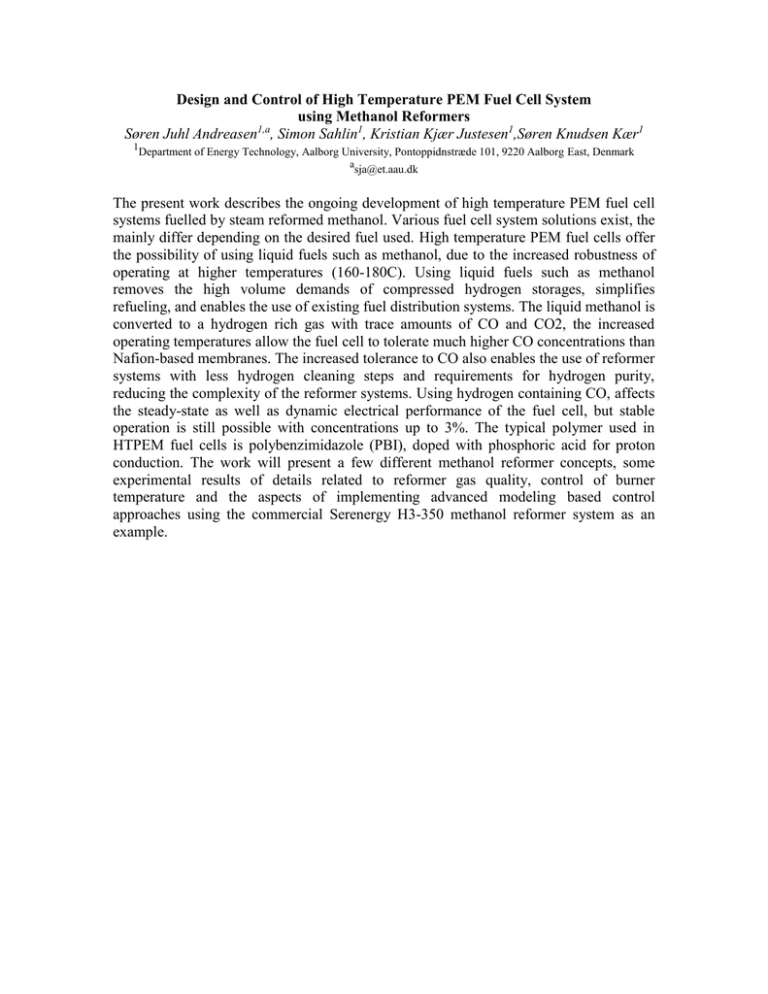
Design and Control of High Temperature PEM Fuel Cell System using Methanol Reformers Søren Juhl Andreasen1,a, Simon Sahlin1, Kristian Kjær Justesen1,Søren Knudsen Kær1 1 Department of Energy Technology, Aalborg University, Pontoppidnstræde 101, 9220 Aalborg East, Denmark a sja@et.aau.dk The present work describes the ongoing development of high temperature PEM fuel cell systems fuelled by steam reformed methanol. Various fuel cell system solutions exist, the mainly differ depending on the desired fuel used. High temperature PEM fuel cells offer the possibility of using liquid fuels such as methanol, due to the increased robustness of operating at higher temperatures (160-180C). Using liquid fuels such as methanol removes the high volume demands of compressed hydrogen storages, simplifies refueling, and enables the use of existing fuel distribution systems. The liquid methanol is converted to a hydrogen rich gas with trace amounts of CO and CO2, the increased operating temperatures allow the fuel cell to tolerate much higher CO concentrations than Nafion-based membranes. The increased tolerance to CO also enables the use of reformer systems with less hydrogen cleaning steps and requirements for hydrogen purity, reducing the complexity of the reformer systems. Using hydrogen containing CO, affects the steady-state as well as dynamic electrical performance of the fuel cell, but stable operation is still possible with concentrations up to 3%. The typical polymer used in HTPEM fuel cells is polybenzimidazole (PBI), doped with phosphoric acid for proton conduction. The work will present a few different methanol reformer concepts, some experimental results of details related to reformer gas quality, control of burner temperature and the aspects of implementing advanced modeling based control approaches using the commercial Serenergy H3-350 methanol reformer system as an example.


